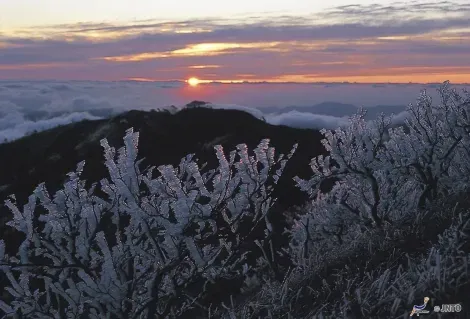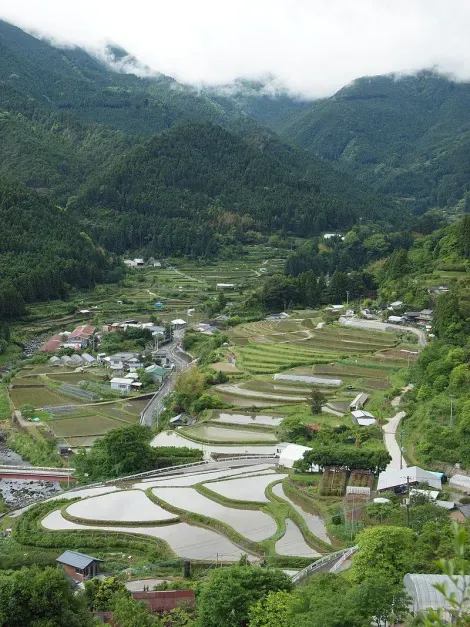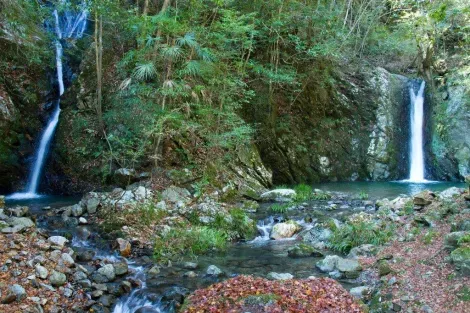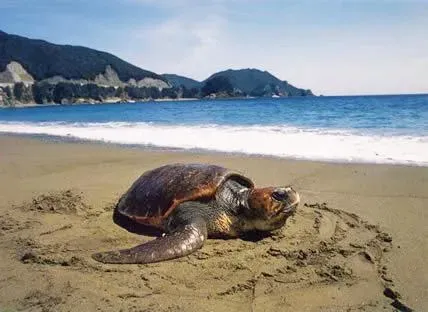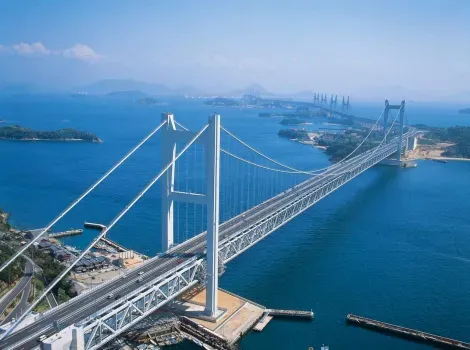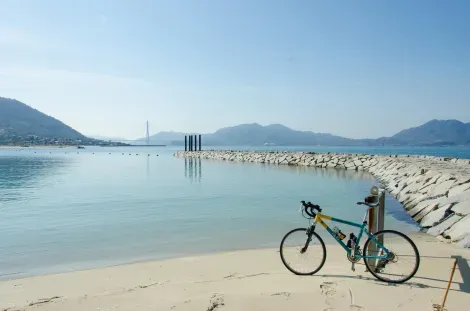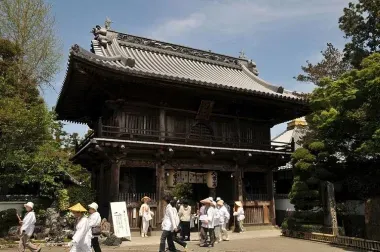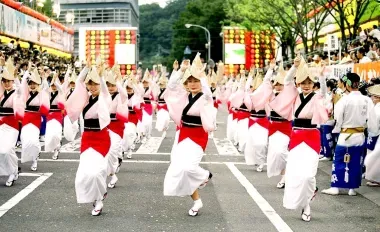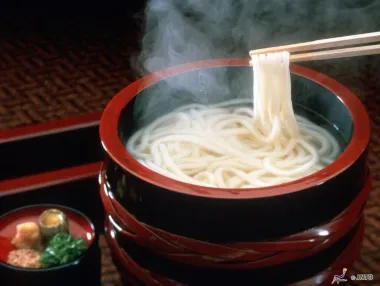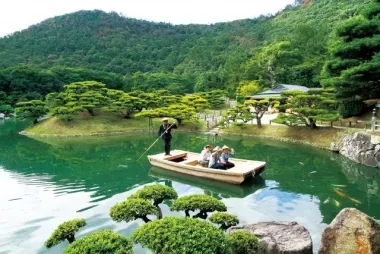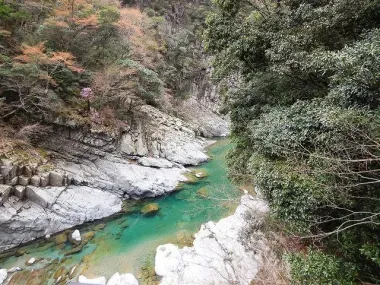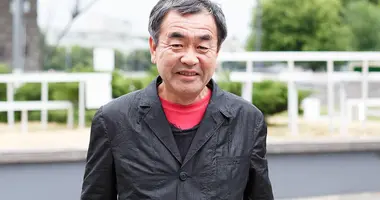Shikoku Island
- Published on : 01/09/2020
- by : I.D.O.
- Youtube
Shikoku, the smallest of Japan's four main islands
With its Mediterranean landscapes planted with olive trees along the Inland Sea of Japan (Setouchi), its mountainous landform, rice terraces, lush forests and long white sand beaches, Shikoku delights the senses. The island is also home to Japan's most famous pilgrimage route, Shikoku hachiju hakkasho, dotted with 88 temples. Discover this authentic island still rarely visited by tourists.
The geography of Shikoku
With its 18,800 km², Shikoku is the smallest and least populated (approximately 4.5 million inhabitants) of Japan's the four main islands.
Located south-west of the large island of Honshu from which it is separated by the Seto Inland Sea and is bordered by the Pacific Ocean on its southern coasts. Mountain ranges form natural borders between regions, especially between North and South. The north, closer to Kansai's big cities, is more industrialized and more developed than the south, which is mainly agricultural. Due to its milder climate, the South is renowned for its production of various kinds of citrus.
The island is divided into four prefectures: Ehime (in the south-east), Kochi (in the south-west), Kagawa (in the north-west) and Tokushima (in the north-east), which more or less correspond to the four established fiefdoms of the Middle Ages.
The history of Shikoku Island
According to the Kojiki ("Records of Ancient Matters", collection of myths dating from 712) Shikoku is the third island in Japan created by the divine couple, Izanagi and Izanami.
Difficult to access and wild, it served as a refuge for members of the Taira clan (also called Heike) who hid there to escape the enemy Minamoto clan. But after the victory of the Minamoto in 1185, the island was divided into four fiefdoms (Shi means "four" and "koku" countries), all were ruled by a vassal of Minamoto no Yoritomo, the founder of Kamakura. The feudal era which followed favored the construction of splendid castles.
- Read more: Kamakura
Traditions of the Shikoku region
Shikoku has been known for centuries for the Shikoku Pilgrimage, dedicated to the revered monk Kukai, also known as Kobo Daishi (774 - 835), originally from the island.
The island is also the home of two major festivals: the Awa-Odori in Tokushima and the Yosakoi Festival in Kochi, both take place in August.
- Read more: Festivals not to be missed in Shikoku
There is also another age-old and unique tradition in Japan: bull fights in the city of Uwajima. Less bloodthirsty than bull fighting, only the animals fight in pairs until one of the two gives up the fight. The bull who still wants to fight is declared the winner.
The culinary specialties of Shikoku
Shikoku cuisine is renowned throughout Japan. It abounds in fish and citrus fruits of all kinds and its rice cultivation is very developed. In addition, each prefecture has its own specialties.
Ehime is known for its jakoten, a specialty of the city of Uwajima: a kind of fish pâté cut into rectangles then fried and eaten like a snack.
The prefecture of Kochi is famous for its katsuo no tataki, a bonito sashimi with grilled skin.
Kagawa is famous for its udon, especially for its sanukidon, large wheat noodles served in a seaweed broth and soy sauce.
Tokushima, on the other hand, is known for its sudachi, a small citrus fruit that is harvested green for its acidic juice and which flavors many dishes, including soups.
Takamatsu: Home to one of the 25 most beautiful gardens in Japan, Tamamo Koen (Tamamo Park). Ritsurin park should also not be missed.
Tokushima: Most famous for its Awa-Odori festival and the Naruto sea whirlpools.
Hikes and walks in the Shikoku
The Iya Valley: Steep mountains, lush forests, gorges, rivers, waterfalls and suspension bridges. A jungle in Japan.
Shimanami Kaido: For seasoned cyclists or lovers of bicycle rides, beaches, majestic landscapes and a slower pace. A 70-kilometer cycle path that spans the Seto Inland Sea with bridges connecting six islands.
Shikoku Seiyo Geopark: A great place to explore with its unique landscapes and unspoiled nature in Ehime Prefecture.
What to see in Shikoku?
Between its long sandy beaches in the south, its mountain ranges, its rice terraces, its picturesque villages and of course, its temples, you should take at least several days to explore Shikoku.
The four great cities of Shikoku
Matsuyama: In addition to its feudal castle, Matsuyama-jo, the city is home to 8 of the famous pilgrimage temples and in its periphery. It is also home to Dogo Onsen, one of the oldest and most famous onsen in Japan.
Kochi: The city is famous for its castle built in the early seventeenth century. Its Sunday market (Kochi ichiba) offers local vegetables and freshly caught fish. Manga fans should not miss the Yokoyama Manga Museum.






